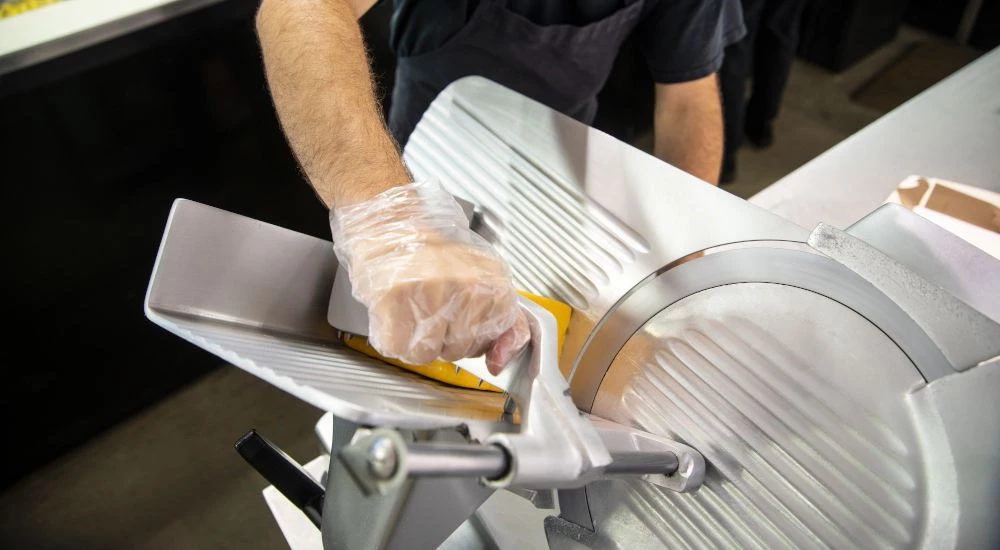Best Practice in Caring for Meat & Other Slicers

By – The Editor
Whether you run a deli, a sandwich shop, or a grocery store, if you offer fresh meat and cheeses, you need to take precautions to avoid spreading foodborne illnesses. Dirty slicers carry bacteria and germs and can also become less effective at getting the results you desire. Here we offer best practice tips for caring for meat and other commercial slicers.
Keep Slicers Clean
You might not realize it is recommended you clean and sanitize your slicers every four hours. This is the best way to avoid food coming into contact with dangerous bacteria. While it might seem washing is good enough, washing alone only removes food debris. Therefore, a combination of washing and sanitation is necessary to also reduce bacteria. You can follow these steps to ensure you effectively remove food debris and bacteria:
● Wear disposable gloves on clean, dry hands.
● Prepare your cleaning solutions following the instructions on the label.
● Turn off the slicer and close the blade by setting it to zero.
● Always unplug the slicer to reduce the risk of injury.
● Remove your gloves and put on a cut-resistant glove on the hand you use to clean the blades.
● Put on a clean single-use glove on the other hand and one over the cut-resistant glove.
● Follow the slicer’s instructions to remove the blade and guard plate.
● Place the parts to the side.
● Spray the slicer’s surfaces with your sanitizer solution and use a clean disposable paper towel to wipe everything down. Be sure you remove all food residue.
● Use a small multipurpose brush to scrub control knobs, handles, seams, and screws with detergent.
● Clean the area between the guard and blade with a fresh heavy-duty disposable towel.
● Use your towel making sure to get between the grooves. Glide it across the groove until you see you have removed all signs of food debris.
● Use detergent and a heavy disposable towel to wipe and clean the entire stand being sure to use the hand with your cut-resistant glove and then clean the front and back of the blade, knobs, handles, seams, screws, buttons, and drip tray.
● Some slicers have a center hole at the blade, so be sure to wash this area thoroughly as well. It is best to dip the deli slicer brush in detergent and then insert it into the hole to clean it out.
● Once complete, rinse off any residue that might remain on the slicer and then rinse it with a clean disposable towel and clean water.
● To sanitize, be sure to spray your sanitizer over the entire slicer, and let it sit according to the sanitizer instructions. If you wipe it away too soon, it won’t have time to do its job.
● Let the slicer air dry.
● Meanwhile, take the parts you removed to a three-compartment sink, with the first filled with detergent, the second filled with clean water and the third filled with sanitizer. First, use the detergent, then rinse the parts in the clean water before submerging the parts completely in the sanitizer for the time recommended on the instructions.
● Reassemble the slicer and plug it in.
When you complete these tasks properly, you can reduce the number of bacteria that form on the surfaces and keep your customers safe. You can also keep your slicer in working order to avoid commercial meat slicer repairs.
If you find you need your commercial meat or cheese slicer repaired, speak to our team at General Parts Group today, or submit a Book Service form and we contact you to get it scheduled.
